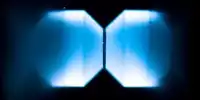Lexical lifting which seems to be the case has seen some incredible feats in the last few years, becoming sophisticated enough to hold and hold a small object in medium air, and manipulating it using sound waves. Now, Japanese researchers have reported a new approach to achieving non-communicative pickups that they believe is a world-first.
They were able to lift an object from a flat reflective surface using “acoustic tweezers” (something like a tractor beam made of sound). A team from Tokyo Metropolitan University has deployed a hemispherical ultrasonic array of an ultrasound transducer that creates a 3D acoustic field that can trap and lift a small polystyrene ball.
These arrays are usually used to make acoustic tweezers, but if the particle you want to pick up sits on something that reflects sound waves, the device fails. To overcome this obstacle, scientists approached the problem in a new way, describing their progress in the Japanese Journal of Applied Physics. In order to overcome the limitations of technology, the stage and amplitude of its soundwaves in each channel of the array were optimal. This allows creating an acoustic trap in the correct position to capture the particle without dealing with the reflected soundwaves.
This means that the device can lift a small polystyrene ball from a reflecting surface and move it up and down like a tractor beam. It is very broad on what can be achieved with the help of soundwaves. The science behind it is fascinating. The sound waves emitted by the array overlap in a small region where their pressure is sufficient to keep a small object suspended in mid-air. It is also possible to move the place where they overlap and the way they overlap so that small floating objects can be moved and manipulated.
Acoustic lifting has been demonstrated in multiple ways. From a levitation gauntlet that lets you manipulate mid-air objects with robotic weapons equipped with hemispherical ultrasonic arrays, for ways that could potentially excite humans one day. Similar approaches to moving and suspending matter have been achieved with the help of light for a very long time. The late Professor Arthur Ashkin won the Nobel Prize in 2018 for his discovery of optical tweezers, which allowed the manipulation of microscopic objects. This technique is often used in chemistry and biology.














